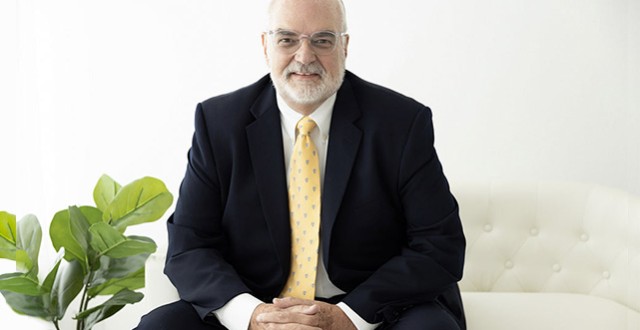
- Mediation
- Arbitration
- Court Neutrals
- Online Dispute Resolution
- Technology
- Court Decisions
- More
- Legislation
- Healthcare
- Guest Posts
- John DeGroote
- John C. Fleming
- Rick Freeman
- Professor Peter Friedman
- Honorable W. Royal Furgeson, Jr.
- James M. Gaitis
- Laura A. Kaster
- Professor John Lande
- Philip J. Loree, Jr.
- Michael McIlwrath
- F. Peter Phillips
- Professor Alan Scott Rau
- Professor Thomas J. Stipanowich
- Professor S.I. Strong
- Richard Webb
- Glen M. Wilkerson
- International arbitration
- Regulation
- Sports and Entertainment
- We’re Back!!!!Well, it’s been a while since we published and that is about to change. Since I spent much of last year becoming
 JAMS Welcomes Karl Bayer to its Panel of NeutralsJAMS, the world’s largest private alternative dispute resolution (ADR) provider, is pleased to announce that Karl Bayer
JAMS Welcomes Karl Bayer to its Panel of NeutralsJAMS, the world’s largest private alternative dispute resolution (ADR) provider, is pleased to announce that Karl Bayer Class Action Waivers in Arbitration Agreements: The Twenty-First Century Arbitration Battleground and Implications for the EU CountriesLinda S. Mullenix, Morris & Rita Atlas Chair in Advocacy at the University of Texas School of Law, has written “Class Ac
Class Action Waivers in Arbitration Agreements: The Twenty-First Century Arbitration Battleground and Implications for the EU CountriesLinda S. Mullenix, Morris & Rita Atlas Chair in Advocacy at the University of Texas School of Law, has written “Class Ac Picking the Proper Technological Tool for Problem-Solving in ArbitrationProfessor Amy J. Schmitz, John Deaver Drinko-Baker & Hostetler Chair in Law and Co-Director of the Translational Data An
Picking the Proper Technological Tool for Problem-Solving in ArbitrationProfessor Amy J. Schmitz, John Deaver Drinko-Baker & Hostetler Chair in Law and Co-Director of the Translational Data An
Recent Posts
Bargaining in the (Murky) Shadow of Arbitration
Jill Gross, Associate Dean for Academic Affairs and Professor of Law at Pace University’s Elisabeth Haub School of Law, has published “Bargaining in the (Murky) Shadow of Arbitration,” Harvard Negotiation Law Review, Vol. 24, 2019.
Continue reading...Fifth Circuit Holds Class Arbitration is a Gateway Issue for the Courts to Decide
The United States Court of Appeals for the Fifth Circuit has issued an opinion holding the issue of class arbitration is a gateway matter for the courts to decide.
Continue reading...Mind the Gap: Bringing Technology to the Mediation Table
Alyson Carrel, Clinical Associate Professor and Assistant Dean of Law and Technology Initiatives at Northwestern University Pritzker School of Law, and Noam Ebner, Professor of Negotiation and Conflict Resolution in the Department of Interdisciplinary Studies at Creighton University, have published “Mind the Gap: Bringing Technology to the Mediation Table,” Journal of Dispute Resolution, 2019 (2), 1-45.
Continue reading...CMS Issues Final Rule Allowing Pre-Dispute Nursing Home Arbitration Agreements
The Centers for Medicare & Medicaid Services (“CMS”) has issued a final rule allowing the use of pre-dispute, binding arbitration agreements by nursing homes across the United States.
Continue reading...Arbitration
Catherine A. Rogers, Professor of Law at Penn State Law and Professor of Ethics, Regulation & the Rule of Law at Queen Mary, University of London, and Christopher R. Drahozal, John M. Rounds Professor of Law at the University of Kansas School of Law, have written “Does International Arbitration Enfeeble or Enhance Local Legal Institutions?,” Legitimacy in Investment Arbitration (forthcoming Cambridge University Press 2019).
Continue reading...Mediation
Earlier this month, the United Nations Commission on International Trade Law (UNCITRAL) approved its draft UNCITRAL Convention on transparency in treaty-based investor-State arbitration at its 47th session in New York City.
Continue reading...Healthcare Disputes
The Role of the Standing Neutral in Healthcare Conflict: Advantages and Disadvantages
by Holly Hayes Richard J. Webb, LLC, writes the Healthcare Neutral ADR Blog. Over the last two months, he featured a four-part series on the value of a standing neutral in the healthcare setting. The four-part series of posts includes: introducing the concept, its advantages and relation to Joint Commission requirements, how to define the neutral’s role and Selecting A Hospital-Medicdl Staff Standing Neutral. The series focuses on two standards issued by The Joint Commission (TJC): 1.) Conflict Management Standard LD.01.03.01 which states, “The governing body is ultimately accountable for the safety and quality of care, treatment, and services.” Elements of Performance, or how The Joint Commission will score the standard, include: Development of a code of conduct that defines acceptable, disruptive, and inappropriate behaviors; and creation and implementation of a process for managing disruptive and inappropriate behaviors. 2.) MS.01.01.01 implemented in April 2011 is “designed to contribute to patient safety and quality of care through the support of a well-functioning, positive relationship between a hospital’s Medical Staff and Governing Body.” Element of Performance 10, states “The organized medical staff has a process which is implemented to manage conflict between the medical staff and the medical executive committee on issues including, but not limited to, proposals to adopt a rule, regulation, or policy or an amendment thereto.” Mr. Webb describes the advantages and drawbacks of the role of a Standing Neutral in healthcare: It is clear that the Joint Commission expects each hospital and its medical staff to have a dispute resolution mechanism in place. However, other than for the basic elements of the process (set forth in the Elements of Performance under LD.02.04.01), the Joint Commission leaves it up to each hospital and medical staff to fashion their own means of compliance. Most have simply adopted policies that mimic the Joint Commission’s directives, but are short on detail, essentially leaving conflict resolution to a case-by-case process. Unfortunately, this typically results in the parties falling into their familiar routine: “lawyering up” and setting the litigation machine into motion. Establishment of a hospital-medical staff standing neutral fundamentally alters this habit – and its advantages far outweigh its drawbacks. Advantages 1. Enables self-determination. The hospital and the medical staff remain in control of their relationship and the resolution of their differences, rather than abdicating to the legal system. 2. Saves time. The standing neutral can be activated at a moment’s notice. Once involved, the neutral’s use of alternative dispute resolution processes can bring about a resolution more quickly than traditional legal proceedings. 3. Less costly. The parties will spend less on lawyers and incur lower internal costs by resolving their disputes more quickly and efficiently. 4. Creates trust and confidence. Because the parties have jointly selected the standing neutral, and jointly defined the neutral’s role, they can be confident that the process used to resolve their dispute will be fair. 5. Preserves relationships. Rather than “slugging it out” through legal proceedings, parties using a standing neutral are encouraged to cooperate in a process that will yield a fair result. 6. Reduces the occurrence of disputes. Experience in the use of standing neutrals in the construction industry suggests that parties using this mechanism come to have fewer dispute as time goes on. This occurs because that each party realizes its position on any given issue will be quickly and candidly reviewed by a neutral who will hold both parties to the same standard of good faith and reasonableness. This forum does not favor hyperbole, stonewalling, bluffing and other tactics common to the traditional legal process. Accordingly, parties over time tend to self-regulate their demands and positions to more naturally coalesce around their common objectives. Drawbacks The establishment of a hospital-medical staff standing neutral is not without some perceived drawbacks. 1. Cost. The cost of the standing neutral must be considered. However, when compared to the internal costs and legal fees associated with resolving disputes through conventional means, this cost is minimal. 2. Loss of control. Some parties and their legal counsel may feel that the presence of a third party neutral will interfere with the party’s ability to “control” the handling of disputes that arise. But the neutral only has whatever authority the parties agree upon in advance. In reality, parties have far less “control” over the process and outcome of conventional litigation than they might think. 3. Fear of bias. If a party believes the standing neutral is biased towards the interests of the other party, the process is bound to fail. This is why both parties must participate actively in the selection of the standing neutral. It also means the neutral must work diligently to remain unbiased and appear to be unbiased throughout the engagement. 4. Confidentiality. Introduction of a standing neutral to the parties’ discussions opens up the possibility that confidences will be disclosed. The parties must believe that the selected neutral will honor the obligations of confidentiality imposed under the parties’ agreements and by law. Please see our interview with Mr. Webb for Disputing here . What do you think about a standing neutral in the healthcare setting? Holly Hayes is a mediator at Karl Bayer, Dispute Resolution Expert where she focuses on mediation of health care disputes. Holly holds a B.A. from Southern Methodist University and a Masters in Health Administration from Duke University. She can be reached at holly@karlbayer.com.
Continue reading...Lowering Malpractice Risk through Disclosure
by Holly Hayes The University of Michigan Health System implemented a system to respond to patient injuries and medical malpractice claims and has “lowered its average monthly cost rates for liability, patient compensation, reserves, and non-compensation legal costs” as well as reducing “its average monthly rate of new claims from 7.03 to 4.52 claims per 100,000 patient encounters, decreased the average monthly rate of lawsuits from 2.13 to 0.75 per 100,000 patient encounters, and reduced the time between claim reporting and resolution”. The new system was implemented in mid-2001 and early 2002. The full report by Richard C. Boothman, Sarah J. Imhoff and Darrell A. Campbell JR can be seen in the Spring 2012 edition of “Frontiers of Health Services Management” an American College of Healthcare Executives (ACHE) publication. Click here for ACHE member sign-in. At the beginning of the new approach, the University of Michigan Health System (UMHS) communicated with the plaintiffs’ bar and the Michigan courts. During the first year of the program, plaintiffs’ lawyers changed the way they approached UMHS about claims. Currently, they openly engage UMHS before any claims are asserted and before a suit is contemplated. This level of dialogue allows plaintiffs’ lawyers to make better choices about the cases filed and allows UMHS to resolve most claims without litigation. Before implementation of the new system, UMHS frequently settled non-meritorious cases (cases where UMHS felt the standard of care was met). Since the adoption of the principled approach, the non-meritorious settlements has decreased significantly. The meritorious claims, those where UMHS agrees the standard of care was not met, make up the majority of settlements. While the overall lower claims numbers result in claims savings, of major importance is the clarity from analysis of errors which presents opportunities for positive change across the system. The authors state, “We can delve deeply into the remaining claims for patterns to strategically target those areas in which errors have occurred to further reduce the number of claims through patient safety improvements.” In summary, The UMHS can no longer blame predatory lawyers and opportunistic patients for its malpractice losses. Isolating legitimate claims allows the health system to precisely examine patterns of behavior, staff members, and processes that signal fixable problems. The UMHS can at least put a partial price tag on the cost of failure to provide patients the quality of care they deserve. This engenders a sense of accountability and a greater sense that the health system can control its malpractice costs through improvements in patient safety. The link between patient safety and medical malpracatice has historiclly been elusive for most institutions; one of the most salient benefits derived from the Michigan Model is the graphic demonstration of that clear link, which is often obscured by the noise of litigation over complications that arrive in spite of reasonable care. We welcome your thoughts on the Michigan Model and the benefits of disclosure in health care. Holly Hayes is a mediator at Karl Bayer, Dispute Resolution Expert where she focuses on mediation of health care disputes. Holly holds a B.A. from Southern Methodist University and a Masters in Health Administration from Duke University. She can be reached at holly@karlbayer.com.
Continue reading...Legal Research
About Disputing
Disputing is published by Karl Bayer, a dispute resolution expert based in Austin, Texas. Articles published on Disputing aim to provide original insight and commentary around issues related to arbitration, mediation and the alternative dispute resolution industry.
To learn more about Karl and his team, or to schedule a mediation or arbitration with Karl’s live scheduling calendar, visit www.karlbayer.com.
















